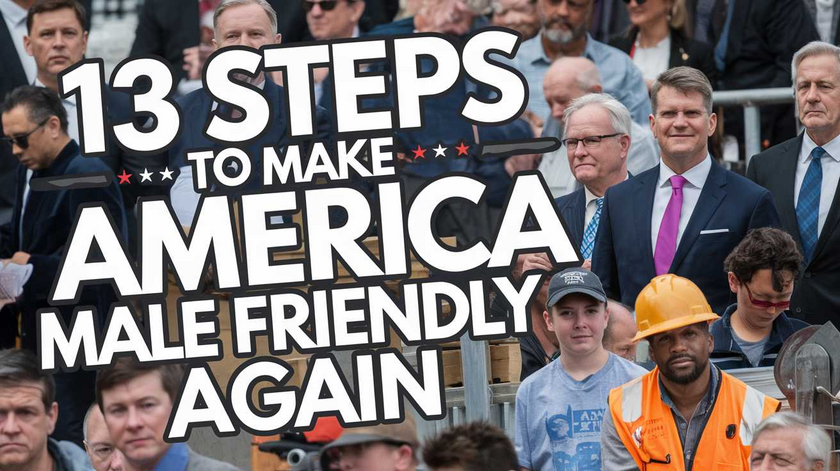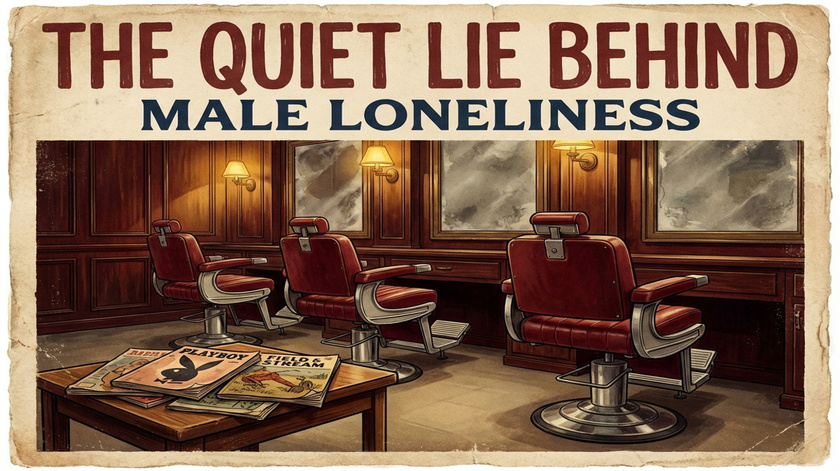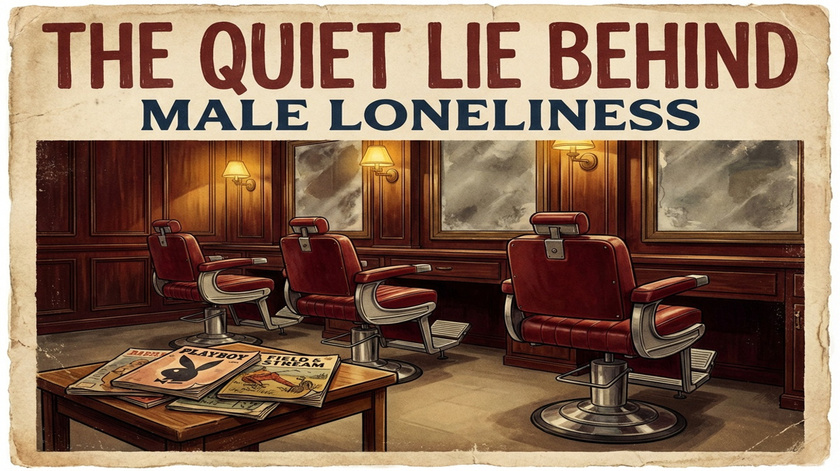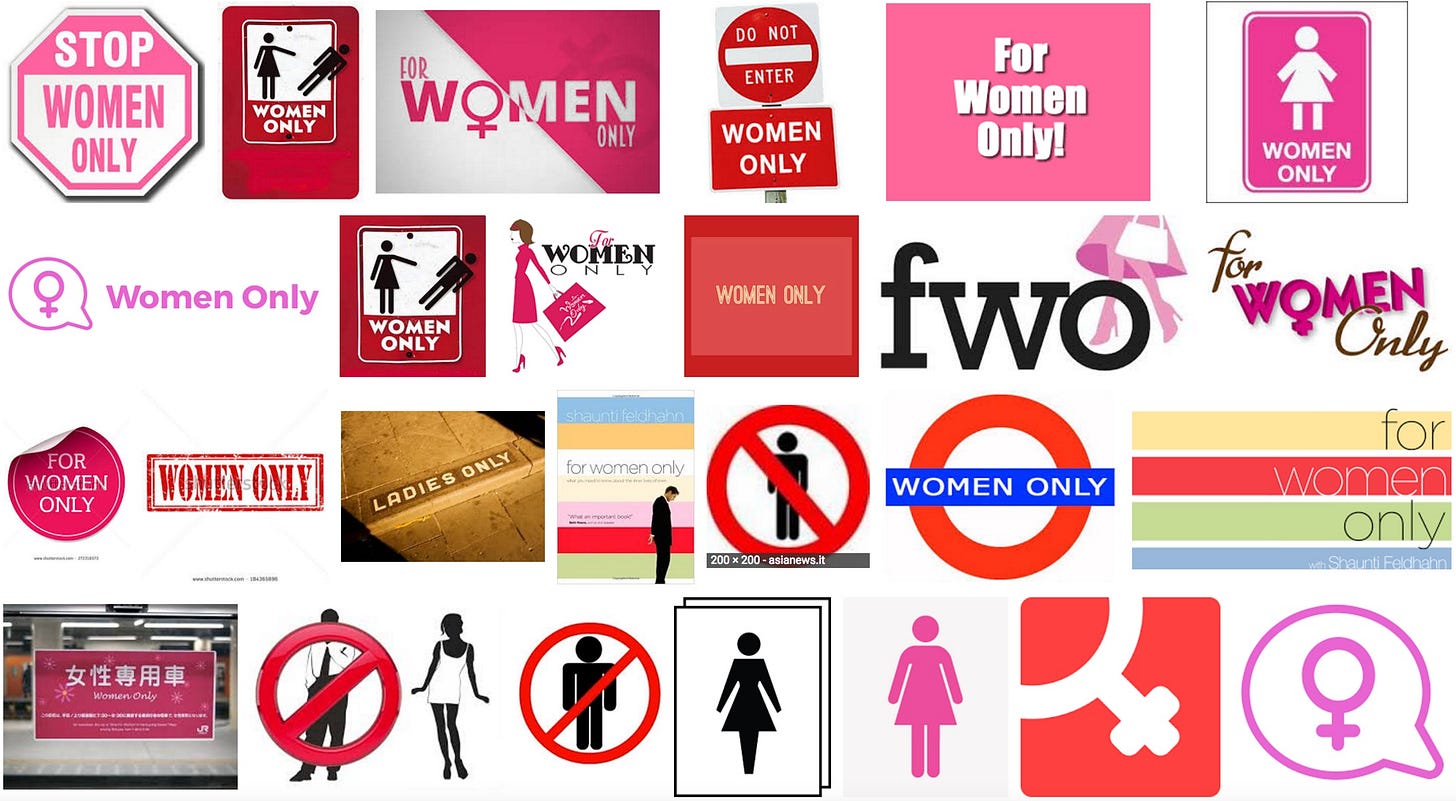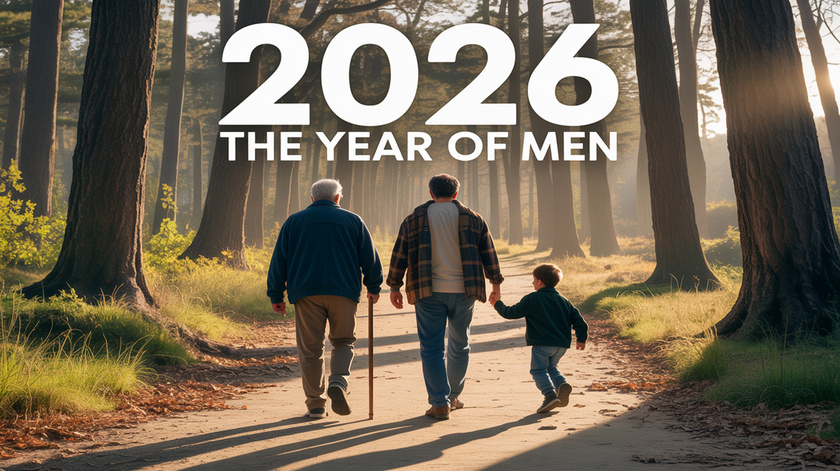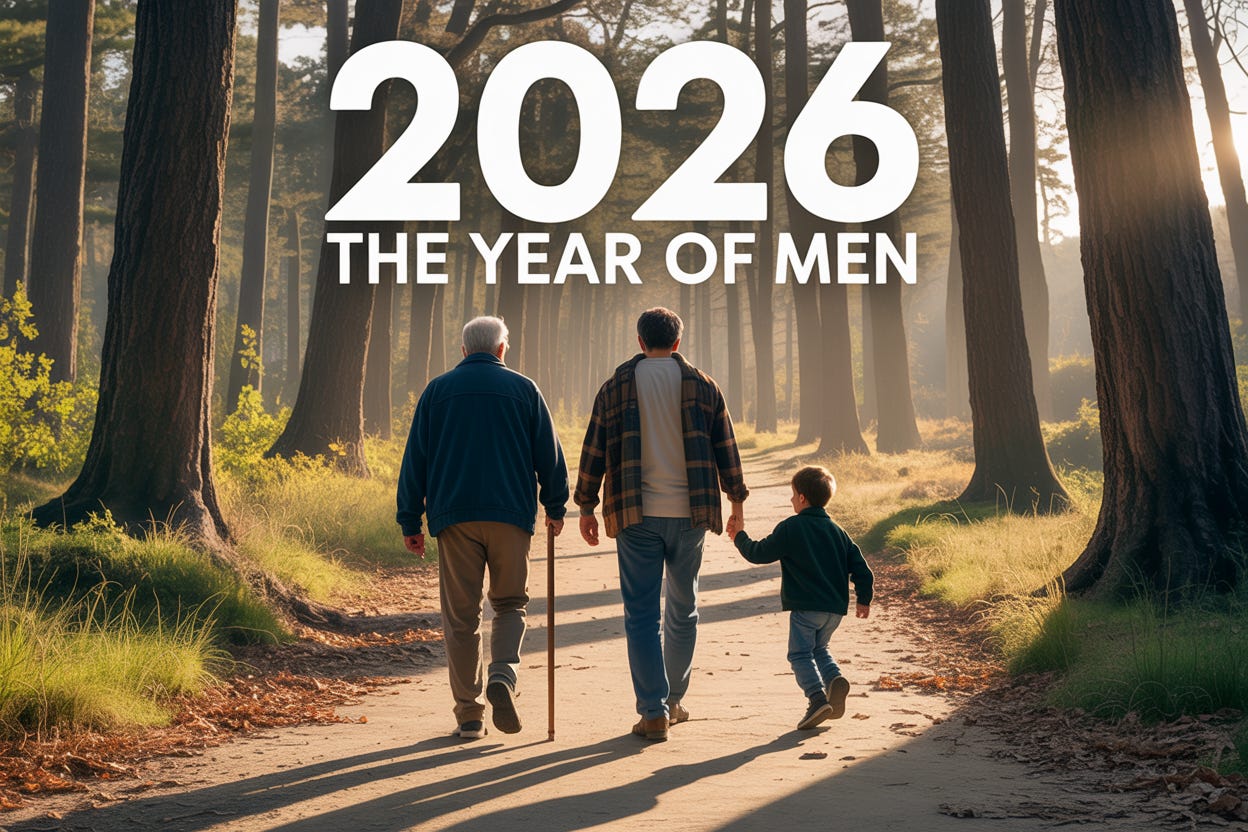13 Steps to Make America Male Friendly Again
President Trump is moving quickly to dismantle DEI initiatives and root out waste and fraud. However, if he truly wants to restore America's greatness, he must confront the deeply embedded misandry in our culture. Some of this stems from feminist-driven legislation and bureaucracies that have taken hold and harmed men, children, and families. Other aspects reflect long-standing societal biases against men. To make America a place where men and boys can be respected and truly thrive, the following changes are essential:
1. Get Fathers Back in the Home
This should be the top priority. Many feminist-driven policies have directly or indirectly pushed fathers out of the home. The research is clear: when fathers are present, children benefit. When fathers are absent, the risks increase including—bullying, being bullied, high school dropouts, early pregnancy, suicide, rape, job failure, low empathy, delinquency, substance abuse, and more. A strong nation depends on strong families, and that means ensuring fathers are in the home.
2. Reform the Family Court System
Family courts are deeply biased against men, often unfairly forcing fathers out of their children’s lives. This creates chaos in families and society. The government has no business micromanaging personal family affairs in ways that harm fathers and children. A major overhaul is needed.
3. Overhaul the Violence Against Women Act (VAWA)
VAWA is one of the most anti-male laws on the books. From start to finish, it assumes men are perpetrators and women are victims, ignoring male suffering and abuse. Even eliminating DEI won’t fix this problem—it’s baked into the law. Dismantling or a serious rewrite is necessary to ensure fairness for all.
4. Restore Male-Only Spaces
Men need places where they can gather without women, just as women have countless female-only clubs and organizations. Yet men’s spaces have been systematically dismantled. Just one example is The Boy Scouts, once a proud institution for boys, now admits girls. It’s time to bring back environments where men can simply be together as men without the presence of women.
5. Give Men a Say in Reproductive Rights
Right now, men have zero legal rights in reproductive decisions—yet they are financially responsible. “Her body, her choice” often translates to “his wallet, her choice.” Men must be included in these conversations and given some level of reproductive autonomy.
6. Make Mental Health Services Male-Friendly
The mental health field is overwhelmingly female-dominated, and the current system fails to understand male psychology, for instance how men and boys process emotions and heal from trauma. Instead of treating them like “defective women,” the system must adapt to better serve male needs. A compassionate, informed approach is long overdue.
7. End Paternity Fraud
A number of men unknowingly raise children who are not biologically theirs. A simple and universal, low-cost paternity test at birth would eliminate this issue and ensure that both parents know the truth. It’s a basic matter of fairness.
8. Make Schools Boy-Friendly
Schools are designed for girls. They offer inadequate recess, female-dominated teaching staff, and a curriculum that doesn’t engage boys. Research shows that many teachers unconsciously favor girls, particularly at risk are active, playful boys. We need educational reforms that support boys’ learning styles and natural energy.
9. Ban Routine Male Circumcision
Female circumcision is outlawed in the U.S., yet male circumcision remains the most common surgical procedure. This unnecessary and harmful practice permanently alters a healthy baby boy’s body without his consent. It’s time to ban routine circumcision unless medically necessary.
10. Address the Male Suicide Crisis
Men make up the vast majority of suicide victims, yet society largely ignores this crisis. Male suicide rates have been higher than female rates for centuries, and still, no one blinks. It’s time to take this issue seriously and find real solutions.
11. Improve Workplace Safety for Men
Men account for 92% of workplace deaths. Job safety policies must acknowledge this reality and prioritize protecting men in dangerous professions.
12. Close the Men’s Health Gap
Men die five years earlier than women and also die earlier from nine of the ten leading causes of death. Yet the government spends more money on women’s health and research. There are 8 federal commissions for women’s health and none for men. This imbalance must be corrected.
13. Crack Down on False Accusations
False accusations ruin men’s lives—financially, socially, and emotionally. Reports suggest that some family law attorneys even encourage false accusations to secure child custody. The phrase “Believe all women” has fueled an environment where men are presumed guilty without evidence. Stronger penalties for false accusations must be enforced and compassion and services for the falsely accused need to be available.
If America wants to be great again, it must be a place where men and boys are valued, supported, and treated fairly. These reforms are essential for restoring balance and strengthening families, communities, and the nation.
Please use the comments to add issues I may have omitted. Men Are Good.
